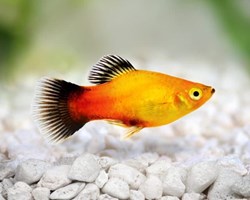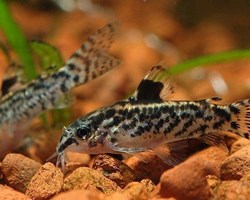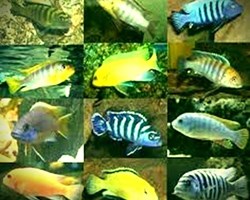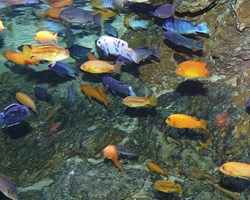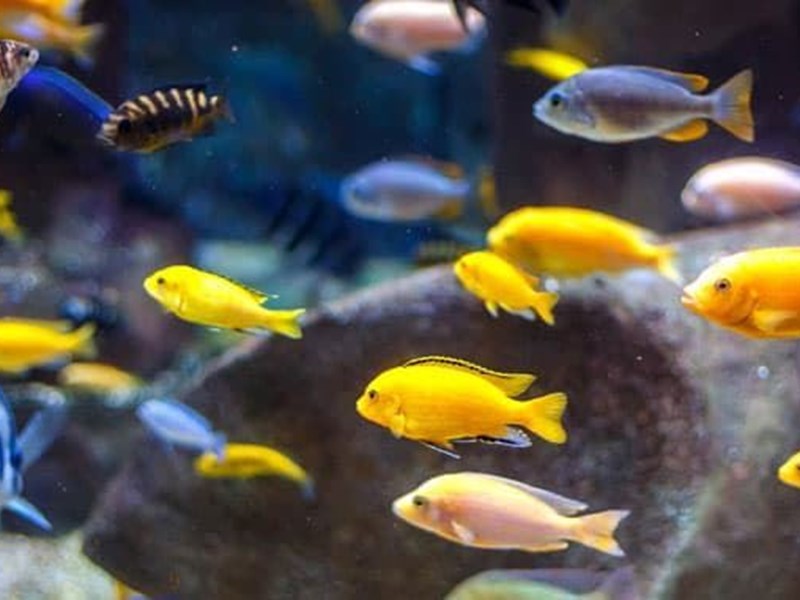
AFRICAN CICHLIDS FROM NON-LACUSTRE WATERS:
While the current emphasis in the aquarium hobby is on the cichlids of Lake Malawi and Lake Tanganyika, there are many other African cichlids that make a brilliant and successful addition to the aquarium.
Some of these (such as Kribs andjewels ) have been popular for years, while others are only now beginning to appear on the market regularly.
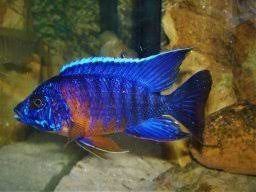
Unlike lake cichlids, these species generally require less infrequent water conditions, doing well in near-neutral pH water of normal hardness.
Generally, they do not oppose any objection to prepared foods supplemented with some salted shrimp or tubifex.
Kribs , Pelvicachromis species, are perhaps the best known of the small West African cichlids, with P. pulcher being easy to find, year-round.
Other species, such as P. taeniatus , are now imported and bred regularly, and to the delight of the aquarist, they would fit perfectly in a small fish tank.
Even though an intense color is interesting at all times, we highlight that the females are especially attractive during the laying season, acquiring a bright pinkish violet tone on their abdomen.
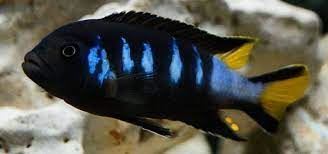
The bright red colors of jewel cichlids, Hemichromis bimaculatus , and allies, have made this fish a popular cichlid for a long time.
It should be noted that these cichlids can be very aggressive when laying. but its zeal does not reach that of its larger and less colorful relative, the Hemichromis elongatus.
This species has earned a reputation for being one of the most aggressive among small common cichlids.
Offering a variety of colors and shapes we have the Nann species. ochromis .
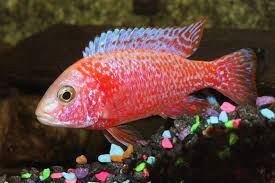
They can be thick, strong fish such as N. dimidiatus, or slimmer, more delicate-looking species such as N. dimidiatus , or slimmer, more delicate-looking species such as n. parilius or the splendens .
The male is generally more colorful than the female in this genus, but the recently introduced N. transvestitus has strongly colored females and rather gray males.
Most of the cichlids from
West and Central Africa are substrate layers but Pseudocrenilabrus ehipcios are instead mouthbrooders.
These colorful little fish are well worth acquiring when they can be found.
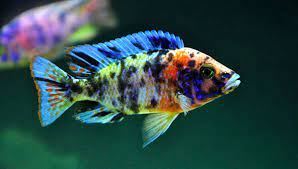
Dr, Axelrod, (1992): Mini atlas of freshwater aquarium fishes. European Hispanic, page 178.
Glu Glu Pet products that may interest you:
- TETRA CICHLIDS.
- Royal cichlid PELLET PREMIUM 330ml.(AZOO).
- Aquavac cleaning kit 15mts.(HAGEN).
- EHEIM PICK UP 160.
- JET-FLO 75 MARINE INTERIOR FILTER.
Other articles that may interest you:
- South American cichlids; They are well suited to community aquariums.
- African Cichlids: from Lakes Tanganyika, Malawi and Victoria.

